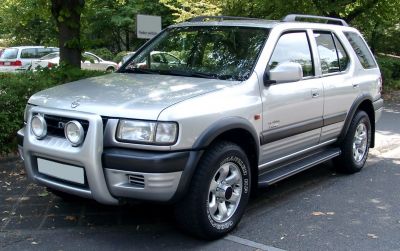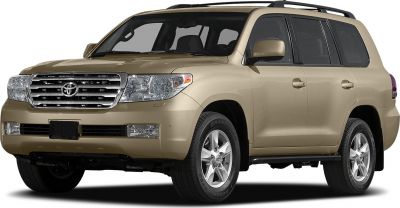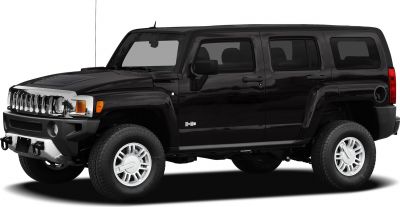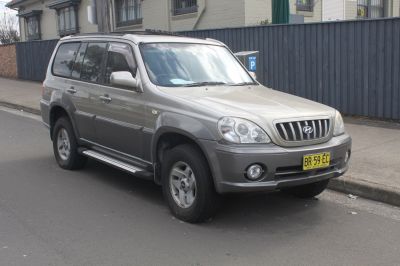 2005 Toyota Fortuner I Dimensions, Size & Specs
2005 Toyota Fortuner I Dimensions, Size & SpecsMeasurements of the 2005 Toyota Fortuner I, engineered for optimal performance and comfort
| Dimensions | |
|---|---|
| Length: | 4695 mm184.8 in15.4 ft |
| Width: | 1840 mm72.4 in6.0 ft |
| Height: | 1795 mm70.7 in5.9 ft |
The Toyota Fortuner I, introduced in 2004 and produced until 2008, is a midsize SUV designed for versatility and rugged performance. With a length of 4695 millimeters (184.8 inches), a width of 1840 millimeters (72.4 inches), and a height of 1795 millimeters (70.7 inches), this generation of Fortuner offers a commanding road presence while maintaining practical dimensions for urban and off-road driving. Built on the robust Hilux platform, the Fortuner I combines durable construction with a spacious interior layout, making it suitable for families and adventure enthusiasts alike. Its well-proportioned size ensures good maneuverability on narrow city streets while providing ample cabin space and cargo capacity. As a full-featured SUV with considerable ground clearance, the Fortuner I supports both daily commuting and off-road excursions, standing out in the competitive midsize SUV market of the mid-2000s. This generation laid the foundation for Fortuner's reputation as a reliable, capable, and stylish SUV option in regions where ruggedness and multi-terrain capability are highly valued.
Discover the standout features that make the 2005 Toyota Fortuner I a leader in its class
Have a question? Please check our knowledgebase first.
The 2005 Toyota Fortuner I has a length of 4695 mm (184.8 inches), a width of 1840 mm (72.4 inches), and a height of 1795 mm (70.7 inches). These dimensions place it firmly in the mid-size SUV category, offering a balanced combination of spacious interior and manageable exterior size for urban and off-road use.
The Toyota Fortuner I's dimensions (4695 mm long, 1840 mm wide, and 1795 mm tall) mean it comfortably fits inside a standard garage in most regions. Typical garage dimensions are around 6 meters (19.7 feet) in length and 3 meters (9.8 feet) in width, so the Fortuner leaves adequate room for easy parking and maneuvering inside standard residential garages.
While specific interior measurements for the Toyota Fortuner I (2005) are less commonly cited, its exterior dimensions suggest ample interior space. With a height of 1795 mm, the Fortuner offers good headroom for both front and rear passengers, while the 1840 mm width gives sufficient shoulder room for three occupants in the rear seat. Legroom is reasonable given the SUV's wheelbase and overall size, delivering comfortable seating for long journeys and daily commutes.
The Toyota Fortuner I provides a competitive cargo capacity typical for an SUV of its class. While exact cargo volume varies with seat configuration, the Fortuner allows for generous loading space behind the rear seats and even greater capacity when the second and third rows (if equipped) are folded. Its size facilitates practical storage for luggage, sporting gear, or shopping, making it a versatile vehicle for families and adventurers.
With a width of 1840 mm (72.4 inches), the Fortuner I strikes a balance between interior spaciousness and urban drivability. This width allows the SUV to navigate city streets and narrow roads relatively easily compared to larger SUVs. However, drivers should still be cautious in tight spaces, as the Fortuner is wider than compact cars but narrower than many full-size SUVs and trucks.
Standing at 1795 mm (70.7 inches), the Toyota Fortuner I has a commanding presence on the road, which significantly enhances driver visibility of the road and surroundings. The increased height also contributes to a higher ground clearance than sedans or crossovers, beneficial for off-road adventures. However, this height can slightly affect handling during cornering compared to lower vehicles, due to a higher center of gravity.
The 2005 Toyota Fortuner I marked the introduction of the Fortuner model line, so it technically does not have a predecessor. It set the foundation for Toyota's mid-size SUV offering with dimensions that balanced on-road comfort and off-road capability. Its launch filled a market gap for buyers seeking a robust and spacious sport utility vehicle on a rugged platform.
Compared to other mid-size SUVs of the mid-2000s, such as the Mitsubishi Pajero Sport or Ford Everest, the Toyota Fortuner I was quite competitive. Its 4695 mm length and 1840 mm width are in line with competitors, delivering ample interior space without being excessively large. This dimension set allowed it to be popular in markets needing a reliable, off-road-capable yet manageable SUV.
Although the curb weight of the Toyota Fortuner I varies by configuration, it typically ranges around 1850 to 2000 kg (4079 to 4409 lbs). This weight contributes to stable driving dynamics, especially off-road and at higher speeds, but it may slightly moderate fuel efficiency compared to lighter SUVs or crossovers. The weight is well-managed by Toyota’s engine and drivetrain tuning to balance power and economy.
The Toyota Fortuner I, produced from 2004 to 2008, was known for its rugged build, body-on-frame construction derived from the Toyota Hilux platform, and strong reliability. It featured a variety of petrol and diesel engines catering to different market needs, with a focus on 4WD capabilities, robust suspension, and spacious interior seating for up to seven occupants. It was well-regarded for merging off-road utility with family-friendly features, making it a popular choice in many emerging markets.
Discover similar sized cars.

| Production: | 2011-present |
|---|---|
| Model Year: | 2011 |
| Length: | 4740 mm186.6 in |
| Width: | 1895 mm74.6 in |
| Height: | 1862 mm73.3 in |

| Production: | 1998-2003 |
|---|---|
| Model Year: | 1998 |
| Length: | 4658 mm183.4 in |
| Width: | 1787-1814 mm70.4-71.4 in |
| Height: | 1740 mm68.5 in |

| Production: | 2009-2013 |
|---|---|
| Model Year: | 2010 |
| Length: | 4760 mm187.4 in |
| Width: | 2185 mm86.0 in |
| Height: | 1845-1890 mm72.6-74.4 in |

| Production: | 1997-2004 |
|---|---|
| Model Year: | 1998 |
| Length: | 4658 mm183.4 in |
| Width: | 1785-1814 mm70.3-71.4 in |
| Height: | 1740-1748 mm68.5-68.8 in |

| Production: | 2009-2010 |
|---|---|
| Model Year: | 2009 |
| Length: | 4649 mm183.0 in |
| Width: | 1810 mm71.3 in |
| Height: | 1745 mm68.7 in |

| Production: | 2005-2010 |
|---|---|
| Model Year: | 2006 |
| Length: | 4742 mm186.7 in |
| Width: | 1897 mm74.7 in |
| Height: | 1872-1893 mm73.7-74.5 in |

| Production: | 2001-2006 |
|---|---|
| Model Year: | 2001 |
| Length: | 4710 mm185.4 in |
| Width: | 1860 mm73.2 in |
| Height: | 1795 mm70.7 in |

| Production: | 2005-2011 |
|---|---|
| Model Year: | 2005 |
| Length: | 4710 mm185.4 in |
| Width: | 1871 mm73.7 in |
| Height: | 1820 mm71.7 in |
